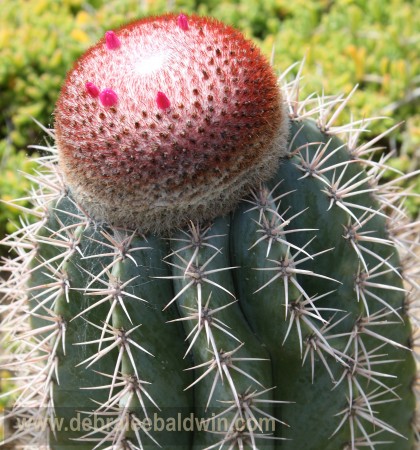
Turk’s cap cactus uses its pelt to collect moisture. It’s native to a maritime location that gets fog but very little rain. As far as the other fuzzy succulents shown here, the best I can come up with is that their filaments help them gain a few degrees of cold protection. If you have a better explanation, do let me (and us) know.

Succulents that generally have smooth leaves may have an oddball in the bunch. Like aeoniums. Aeonium canariense is hirsute; other species are somewhat so, and others not at all. Whenever I come across an aeonium I’m unfamiliar with, I caress it out of curiosity.
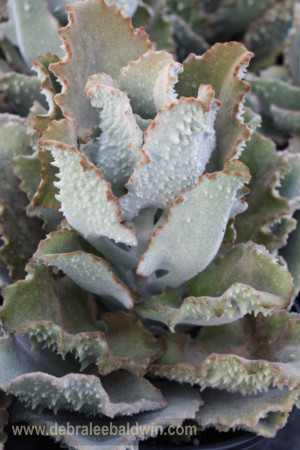
Certain succulents are downright odd in the way they exhibit their fuzziness, like Kalanchoe beharensis ‘Fang’, which has goatee-like protrusions. Why on earth?!

“Tomentose” means “hairy,” so you know how Kalanchoe tomentosa got its name.
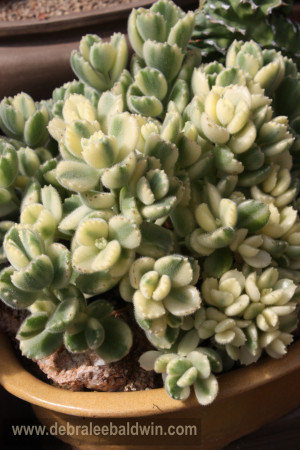
And Cotyledon tomentosa (kitten paws or bear paws).
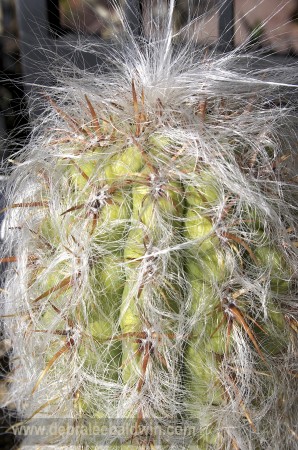
Some of the most bizarre looking succulents, indeed, some of the most bizarre looking plants, are hairy cacti. Like old man of the Andes (Oreocereus celsianus)…
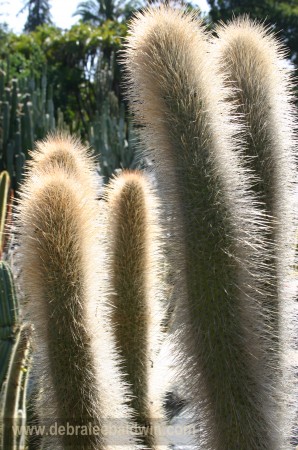
…and Cleistocactus strausii (silver torch cactus). All fuzzy succulents glow gloriously when backlit by the sun.
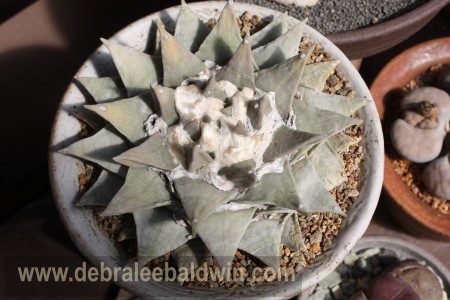
Succulents in the genus Ariocarpus take fuzziness to a whole new level. Every time I see one of these star-shaped plants I marvel at their whipped-cream centers.
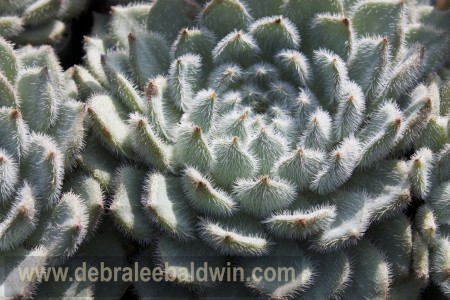
Echeverias are among the most popular succulents because of their rosette forms. Most aren’t fuzzy, but those that are, are memorable. Just try to resist touching an echeveria that needs a shave.
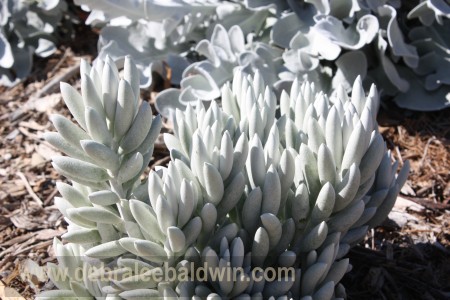
Is there a fuzzy senecio? Yep. And it’s white, too. Senecio herrianus.

How about the genus Sempervivum? Sure, one of the most popular species is webbed with white filaments: Cobweb houseleek (Sempervivum arachnoideum).
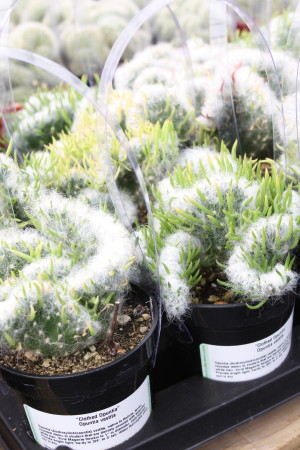
And here’s another that’s borderline sinister: Opuntia vestida (meaning “clothed opuntia”). Beneath that innocent cotton are fishhook-like spines.
My goal is to share the beauty of waterwise, easy-care succulents in gardens, containers and landscapes via blog posts, newsletters, public speaking and workshops, photos, videos, merchandise, and social media (Facebook and Pinterest). My books: Designing with Succulents, Succulent Container Gardens, and Succulents Simplified. www.debraleebaldwin.com
